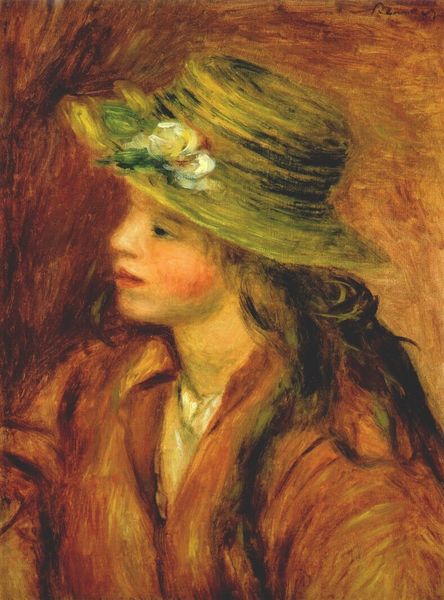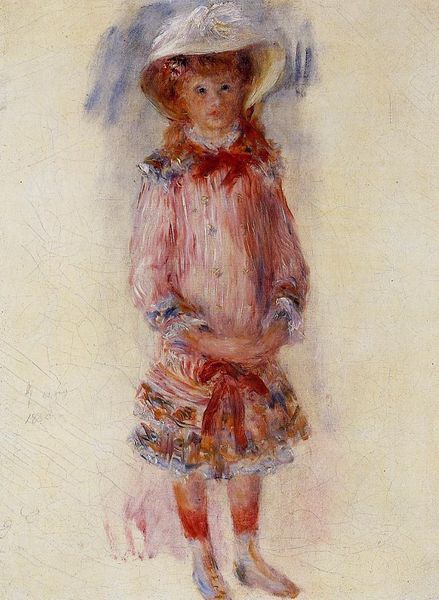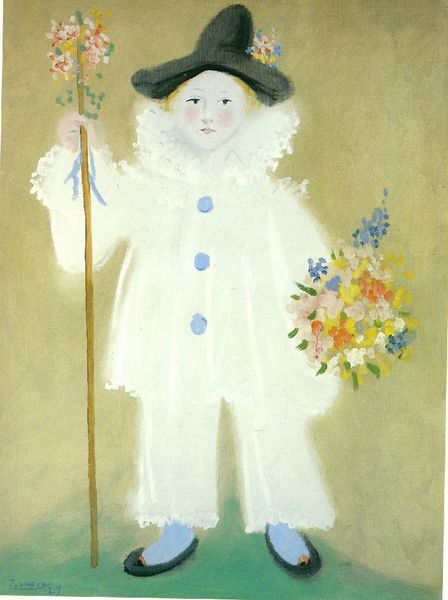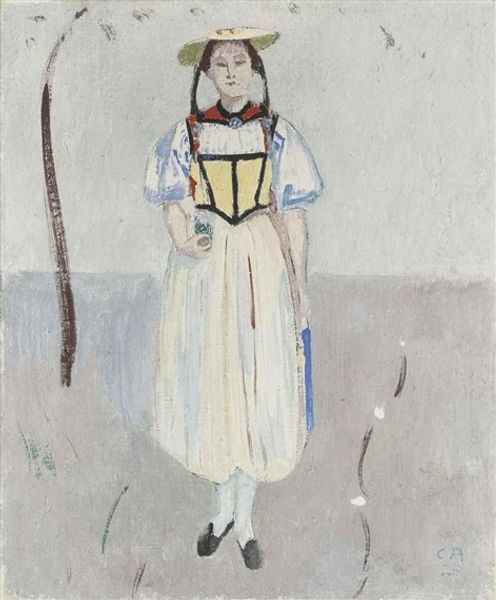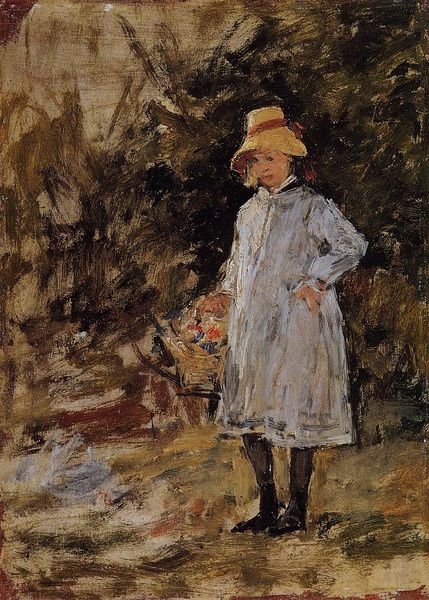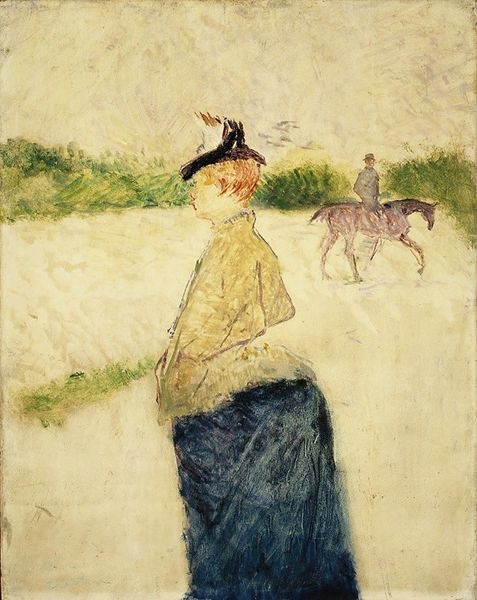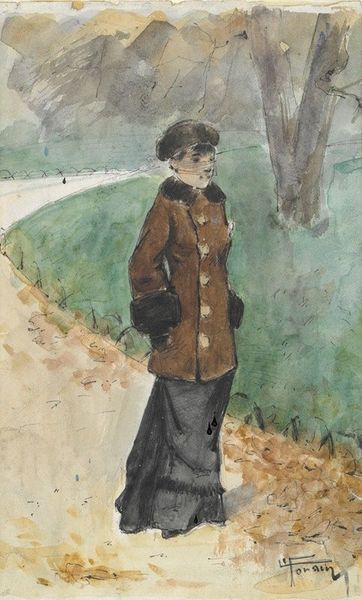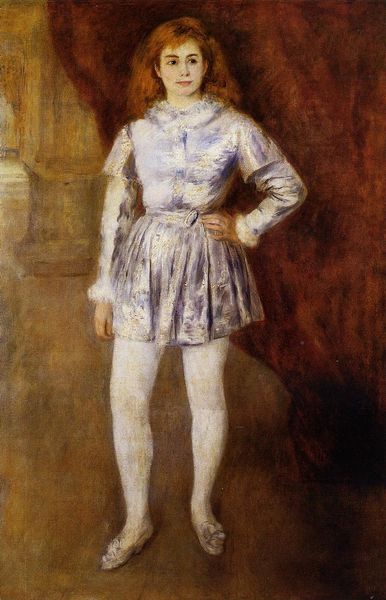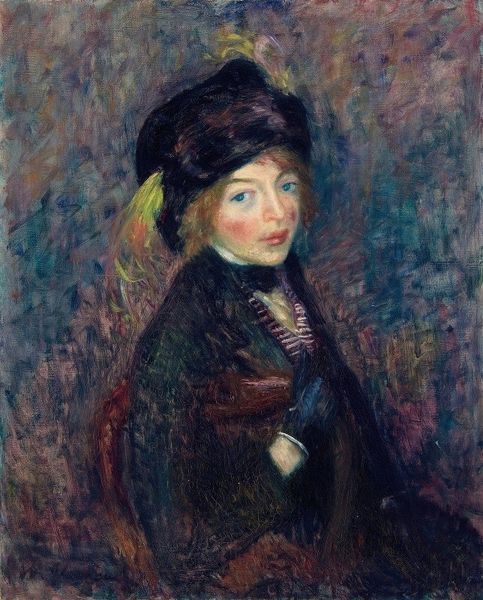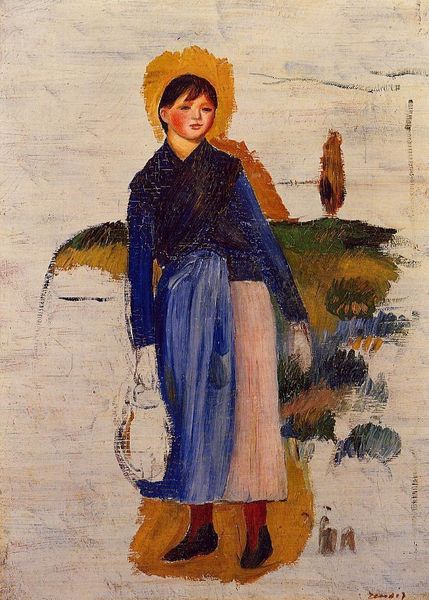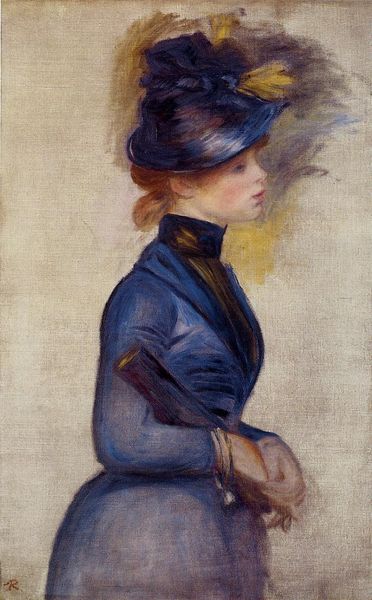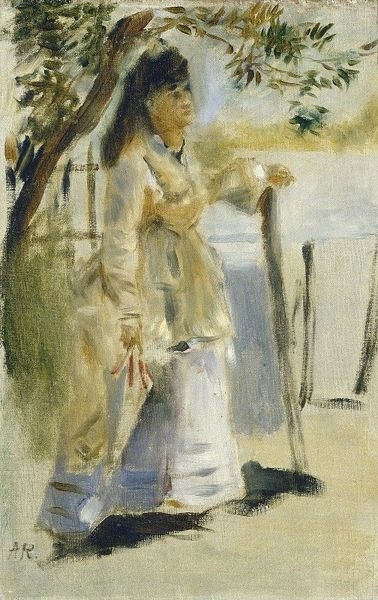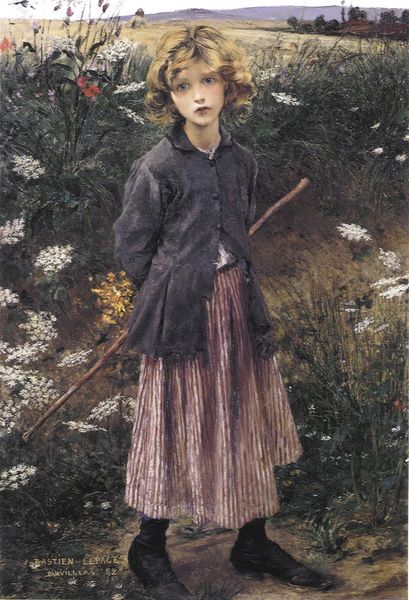
painting, plein-air, oil-paint
#
portrait
#
painting
#
impressionism
#
plein-air
#
oil-paint
#
oil painting
#
genre-painting
#
watercolor
Dimensions: 61.2 x 46 cm
Copyright: Public domain
Editor: This is "The Little Fishergirl" painted by Renoir in 1879 using oil paint in the Impressionistic style. It has a wistful quality. What do you see in this piece? Curator: This seemingly simple portrait invites a complex reading when situated in its historical context. On the surface, we see a young girl poised at the beach, ready for labour or a day of leisure; her dress and the fishing net read as signs of labor. I see a window into the socio-economic realities of children during the late 19th century. Does this painting idealize childhood innocence, or does it hint at the realities of working-class children whose lives were far from idyllic? Editor: That's interesting, I hadn't thought about the social commentary. I was just focusing on her expression. It seems rather somber for a child at the beach. Curator: Exactly. And it's the tension between the idyllic Impressionistic style and that somber expression that makes me question Renoir's intention. Was he aware of the complex reality this image creates? Her gaze carries a weight, a premature knowing that disrupts the expected joy of youth. Consider the labor laws—or lack thereof—at the time and think about who profits from idealizing youthful exploitation. Editor: So you're suggesting that the painting can be viewed as a commentary on class and childhood labor, rather than just a charming portrait? Curator: Precisely. It urges us to consider the social and economic structures that shape even the most seemingly innocent of images, opening up space for feminist and class-conscious readings of canonical art. Editor: I see what you mean! Looking at it that way really changes how I interpret the painting. Curator: It is about critically questioning not only the narrative of the image but how social narratives have been framed through history. I’m so glad you brought it to our attention!
Comments
No comments
Be the first to comment and join the conversation on the ultimate creative platform.
